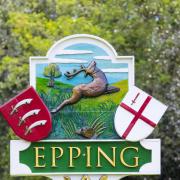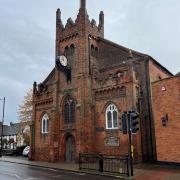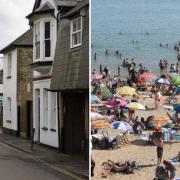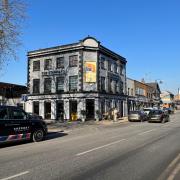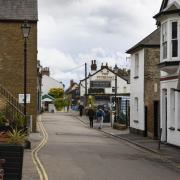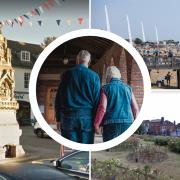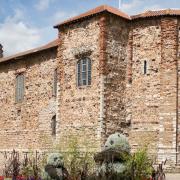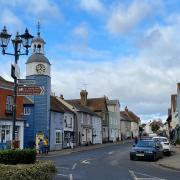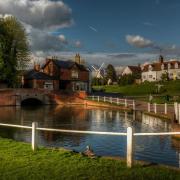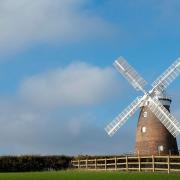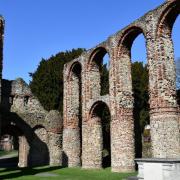Michael Foley is the author of Secret Brentwood, a book which highlights the fascinating collection of historical treasures that have helped make this town the vibrant place it is today. Here Michael shares some of the those treasures with Essex Life readers

Brentwood is a town around 18 miles from London that stands on the road to Norwich. In the mid 19th century it had a population of just over 2,000.
As well as those living in the town there were around 400 inmates in the asylum at Warley, plus a similar number at the schools in the area and around 1,000 men at the barracks at Warley.
The barracks were occupied at different periods by both the British Army and the forces of the East India Company.

In the distant past, it was the small village of South Weald that was the more important settlement in the Brentwood area and it was South Weald that was mentioned in the Doomsday Book.
The area known as Burnt Wood was only mentioned later when pilgrims making their way to the death place of Thomas a Becket in Canterbury needed somewhere to stay. Their route by-passed South Weald and, because of this, a church was built in Brentwood in 1221 dedicated to Thomas a Becket.
Brentwood soon became better known through conflict. Henry lll sent 300 soldiers to arrest Hubert de Burgh in 1232, when he was hiding and claiming sanctuary in the chapel in the town. Then in 1381 Brentwood was one of the first towns to experience the Peasants Revolt led by Wat Tyler.

The town has grown through the years and as well as the pilgrims passing through there have been other attractions throughout its history, such as a race course and large summer military camps at nearby Warley.
Large crowds would gather to watch the sham battles put on by the soldiers, who often fought before royalty. The military camps were regular events in the 18th century, often for training but also in times of national security, such as in 1778 when there was a danger of a French invasion.
A mock battle was watched by George lll and Queen Caroline at the camp. Another famous visitor was Ben Johnson. The camp eventually evolved into permanent barracks in 1805 before, in 1842, the barracks were sold by the Government to The East India Company.

A number of houses were built in the town for the officers of the company army, but in 1861 the barracks returned to the ownership of the Government.
Brentwood is far from the coast, so it may come as a surprise to read that it has many connections with the sea. Admiral John Jarvis lived in a house called Rocketts in South Weald. Jarvis joined the Navy at 14 but after he captured a 74-gun French war ship in 1782 while commander of the Foudroyant, he was made a knight and an admiral.
Perhaps one of Brentwood’s most famous inhabitants was William Hunter. Hunter was burned as a heretic in 1555. The place where he was burned was not where his memorial now stands, but was on part of Shenfield Common known as the Butts. It is now part of the grammar school.

One of the old residents of Brentwood was the father of Cecil Rhodes, who had such an influence on obtaining South Africa for the Empire. His father was the Reverend Francis Rhodes who once climbed on the roof of a burning building in the High Street to remove tiles so the water from the fire engine could reach the flames.
If he had fallen through, then his son may never have been born and the course of history might have been much different.
One of the larger houses to have stood in the town was Brentwood Hall. It was owned by a Mr Kavanagh in around 1840 and stood at the end of Kavanagh Lane, named after the hall owner. The building was later used as part of the asylum after Mr Kavanagh sold 86 acres of his estate in 1849 to be used to build what was known as Warley Hospital.

The building was completed and opened in 1853 and it still looks frightening today — what the patients in their poor mental state must have thought at the first site of the building can only be imagined. Although some parts have been demolished, a large original part of the building remains as apartments.
Brentwood was also instrumental in the development of the trampoline in the UK, thanks to the entrepreneurship of a gentleman called Ted Blake. It was actually George Nissan, an American, who got the idea for a trampoline from watching the use of safety nets for circus acts.

He built his first trampoline in 1934 and toured America performing at carnivals. He then founded his first company manufacturing them in 1941 and they were even used to train American pilots during the war.
After the war, Nissan began to tour in Europe. Blake eventually persuaded Nissan to open a trampoline factory in England. This opened in Hainault in 1956.
Blake was attracting more attention now through his own trampoline in his back garden in Manor Park, where he was living, and the trampoline was featured in the Daily Mirror in 1957.
The factory expanded to larger premises, first in Romford and then to its final home on the Hutton Industrial Estate in Brentwood.




